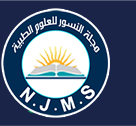Abstract
Osteoporosis is one of the most progressive metabolic bone diseases that affecting millions of people worldwide. The purpose of this study was to assess osteoporosis health beliefs using Osteoporosis Health Belief Scale- Arabic version (OHBS-A) among sample of Iraqi adult men. The study is crosssectional community based study design, involved 138 participants with different age groups. The results showed th0.e mean age of the participants was 40.78±13.05 years. The tool showed a good reliability with the Cronbach's alpha test 0.97 for the forty-two items in OHBS-A. For the test-retest reliability the results demonstrated an accepted reliability and stability with Pearson’s correlation coefficient (r =0.59, P<0.01). The results showed adequacy for factor analysis and with seven factors, with eigenvalues greater than 1, which explained 75.65% of the variance. The OHBS seven subscales are perceived susceptibility, seriousness, perceived benefits of exercise, perceived benefits of calcium intake, perceived barriers to exercise, perceived barriers to calcium intake and health motivation to take preventative actions. The Kaiser-Meyer-Olkin (KMO) value was 0.93 which indicated that the data set was appropriate for factor analysis. The Bartlett’s Test of Sphericity was significant (χ2 (861) = 5474.535; P<0.001). The mean scores (M±SD) of the OHBS-A was 149.98±36.54, which were considered low scores. Furthermore, only 35.5% of the study population was found to have high OHBS-A level. results of this study highlight the need for education awareness programs regarding osteoporosis targeting different aspects of belief perceptions at community and specific risk population.
First Page
1
Last Page
11
Recommended Citation
Abdulameer, Shaymaa Abdalwahed and Sahib, Mohanad Naji
(2022)
"Assessment of Health Beliefs Related to Osteoporosis in a Sample of Iraqi PopulationA,"
Al-Nisour Journal for Medical Sciences: Vol. 4:
Iss.
2, Article 1.
DOI: https://doi.org/10.70492/2664-0554.1071

